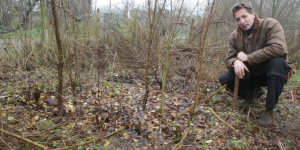ETN_bonsai
Yamadori
This tree is growing in the materials yard at our shop. In total height, it’s right at 11 feet. At the nebari, it’s 3.5-4.5”. I’m considering collecting it in a couple months. My initial thought was to chop it as marked, then cut it lower in a year or two depending on how new branching comes. My concern is that would be too much of a cut. I’d save that branch below the chop and there are some smaller branches that are hard to see in the photo.
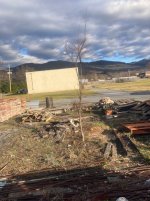
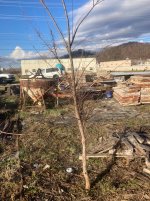
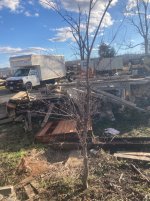
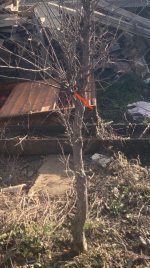
Thanks for any advice or input!




Thanks for any advice or input!





